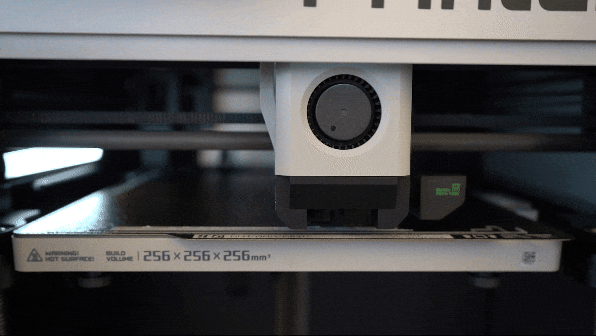
Step 1: Setup Bambu Studio
- First, Install Bambu Studio on your laptop, or use one of the DME desktop computers.
- Select your region: North America.
- Printer setup:
- Deselect all printers.
- Depending on the printer that you will be using at the DME, select Bambu A1 with a 0.40mm nozzle (the vast majority of DME 3D printer bookings –or– Bambu X1 Carbon with a 0.40mm nozzle (specialty printer, approval required).
- Filament selection:
- Deselect all filaments.
- Select Bambu PETG Basic, Bambu PETG-CF, and Generic PLA.
- Final steps:
- Deselect the “Install Network Plugin” option.
- Click “Finish” to complete the setup.
Step 2: Prepare your file for 3D printing
Start by find or creating a 3D model file (.stl, .3mf) that you will 3D print. If you won’t be creating an original design, you can download 3D models from repositories such as Printables, Thingiverse, or Makerworld.
- Check printer settings:
- Ensure that your printer model, print bed, and filament settings match the printer you are using in Bambu Studio.
- Import your mesh file:
- Import the desired mesh file (.stl or .3mf) into the software.
- Use object modification tools:
- The basic tools like Auto Orient, Arrange All Objects, Move, Rotate, Scale, and Lay on Face enable you to perform common tasks (E.g., like orienting your model for efficient printing).
- For this example, use the “Lay on Face” command to orient the model correctly based on the face you choose. (See below in the SLC Model)
- Add supports
- Support are crucial to prevent print failures as seen below. At the DME, we recommend using organic supports whenever possible (these are found under “Support” > “Type” > “Tree”).
- Set Infill Level
- At the DME, we generally print at an infill of up to 20% maximum. Consult an advisor if you need to change the infill number.
- Export your gcode:
- Once you’re satisfied with your print and have confirmed it meets the settings and numbers discussed in the video, select the drop-down menu titled “Print Plate” and choose “Export Plate Sliced File.”
Step 3: Check in for your booking at the DME Welcome Desk
When you arrive at the DME for your booking, check in at the welcome desk to begin your booking. Once you have been set up at your reserved 3D printer, remove the micro-SD card from the printer.
- Transfer your file:
- Save your gcode from your computer (or ours) to the micro-SD card. Your file name should be in the format of lastname-file-version.gcode.
- Start the Print:
- Let a staff member know you are ready to begin your print. They will check the 3D printer with you and ensure that there are adequate supply levels. Do not start the printer without our approval.
- Insert the micro-SD card, with your file, into the printer.
- From the printer menu, select “Print Files,” choose your file, press “Next,” and select the filament color. Remember, a staff member will need to meet with you to discuss your print files before your booking begins. Please do not just walk up to the printer and start printing.
- Finally, press “Print.”
See the 3D printer in action!
- After Printing:
- Wait for the bed to cool to 30-40 ºC before removing it from the printer. Ask a staff member for gloves if you’d prefer.
- Remove the plate by grabbing the front lip. Take your print off the bed by gently bending the plate back and forth.
- Important Note: Absolutely do not ever use metal tools to pry or remove parts from the bed. This will cause serious damage to our printers that will adversely affect print quality.
- Finishing touches:
- If necessary, remove any supports using the tools available at the 3D Printer workstations throughout the DME lab. Please be careful as 3D prints can be a bit sharp. If you would like to use tools like pliers or deburring tools, feel welcome to discuss with a staff member – we have tools to help your achieve great results!
Conclusion
Run through this checklist each time you prepare a 3D print for the Bambu printers at the DME Lab.
For more information, including weekly time limits and common questions about our 3D printing service, please check out our 3D printing frequent questions and documentation page.